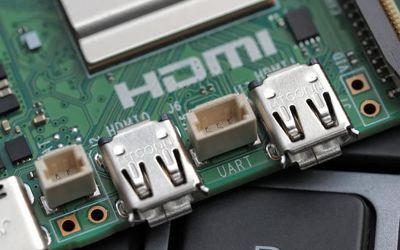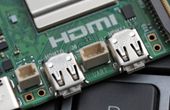Infineon Technologies CY8CPROTO-040T PSoC™ 4000T CAPSENSE™ High-Performance Capacitive Sensing Kit
High-performance capacitive sensing kit for low-power touch operations.
Technical Specifications
| Product Type | Development Board and Kit |
| Programmer | On-board |
| Interface Type | I2C |
| On-board sensors | Capacitive button, slider and proximity sensot |
| Applications | Touch-based electronic systems, embedded systems |
| For evaluation of | PSoC 4000T MCU |
Overview
Infineon Technologies CY8CPROTO-040T PSoC™ 4000T CAPSENSE™ is a prototyping kit that works on the 5th-generation CAPSENSE™ technology for easy prototyping of capacitive sensing devices. It features low-power touch performance capabilities with an array of capacitive input devices. It has a PSoC 4000T MCU that provides scalability and can be reconfigured to work with high-performance capacitive sensing systems.
The board features a unique design, incorporating analog and digital blocks. It also features an on-board programmer and an array of indicators for the developer’s convenience. The CAPSENSE kit provides a seamless demonstration platform for a wide range of touch applications such as consumer electronics, medical devices, industrial automation and many others.
Comprehensive Kit with High-Performance, Low-Power Programmable System on Chip
The CY8CPROTO-040T PSoC™ Capacitive Sensing Kit provides a combination of high-performance PSoC and the most commonly used digital and analog peripherals to enhance the prototyping experience for the users. The PSoC 4000T microcontroller is built for low-power capacitive sensing applications. It’s an Arm® Cortex®-M0 microcontroller that features 5th-generation CAPSENSE technology, which provides a high signal-to-noise ratio without compromising battery power. Hence, it’s widely used for wearable capacitive sensing applications such as smartwatches.
The kit also features sufficient input headers to connect with the existing capacitive sensing board. The controller has PWM enabled, and 16-bit user LEDs. The board can be powered using the USB-type C connector as well as an input power connector.
It comes with a preprogrammed code to test the capacitive input panel.
To initialize the board and test the input panels, the developers must ensure the following steps:
Populate the power jumper (J2)
Connect the jumper (J6) between Pin 1 and Pin 2
Set the switch SW2 to I2C
Connect the board to a PC using the USB-C type connector. Once connected, the indicator LEDs must turn on.
Touch any of the capacitive buttons and check if the LED turns on.
Swipe across the slider panel and detect a change in the brightness of the associated LED.
The kit also comes with a quick setup guide for developers to get started with the development board.
Versatile Capacitive Input Sensors for Touch Applications
The CY8CPROTO-040T PSoC™ 4000T CAPSENSE™ High-Performance Capacitive Sensing Kit provides an innovative interface for the development of touch-based applications. Its array of capacitive touch sensors is based on the CAPSENSE™ technology that works on low power. The capacitive sensors include:
CAPSENSE™ 5-segment slider (CSS1) - A five-segment slider that operates on capacitive sensing technology. It’s specially designed for PSoC microcontrollers and detects the touch position along a linear track. The slider has five distinct segments, each measuring the change in capacitance to track the relative position of the touch. The slider panel helps in prototyping various touch applications like volume control, brightness control, scrolling and customizing controls.
CAPSENSE™ Proximity Sensor (CSP1) - The CAPSENSE™ proximity sensor provides capacitive feedback to the microcontroller, detecting any object within its proximity range. The sensor is helpful for prototyping industrial applications to detect the presence of objects. Likewise, it can be used to prototype various consumer electronic applications.
CSD CAPSENSE™ Button - The CAPSENSE™ button provides capacitive button capabilities that are commonly used in consumer electronics such as touch panels, mobile phones, etc.
CSX CAPSENSE™ Button - It’s a mutual capacitance button that detects input by measuring the relative change in capacitance.
Where to find it

Mouser Electronics
Mouser Electronics is a worldwide leading authorized distributor of semiconductors and electronic components.








